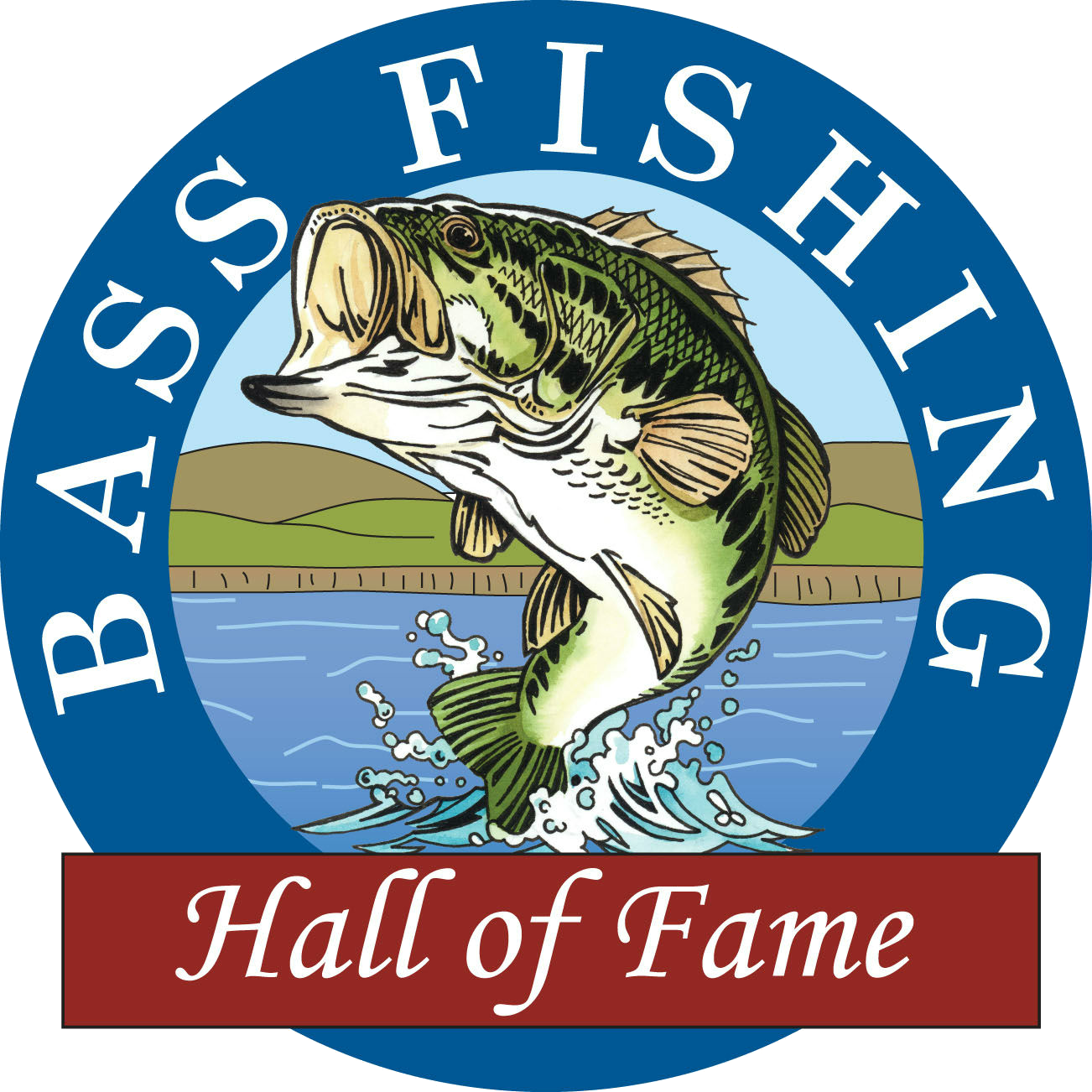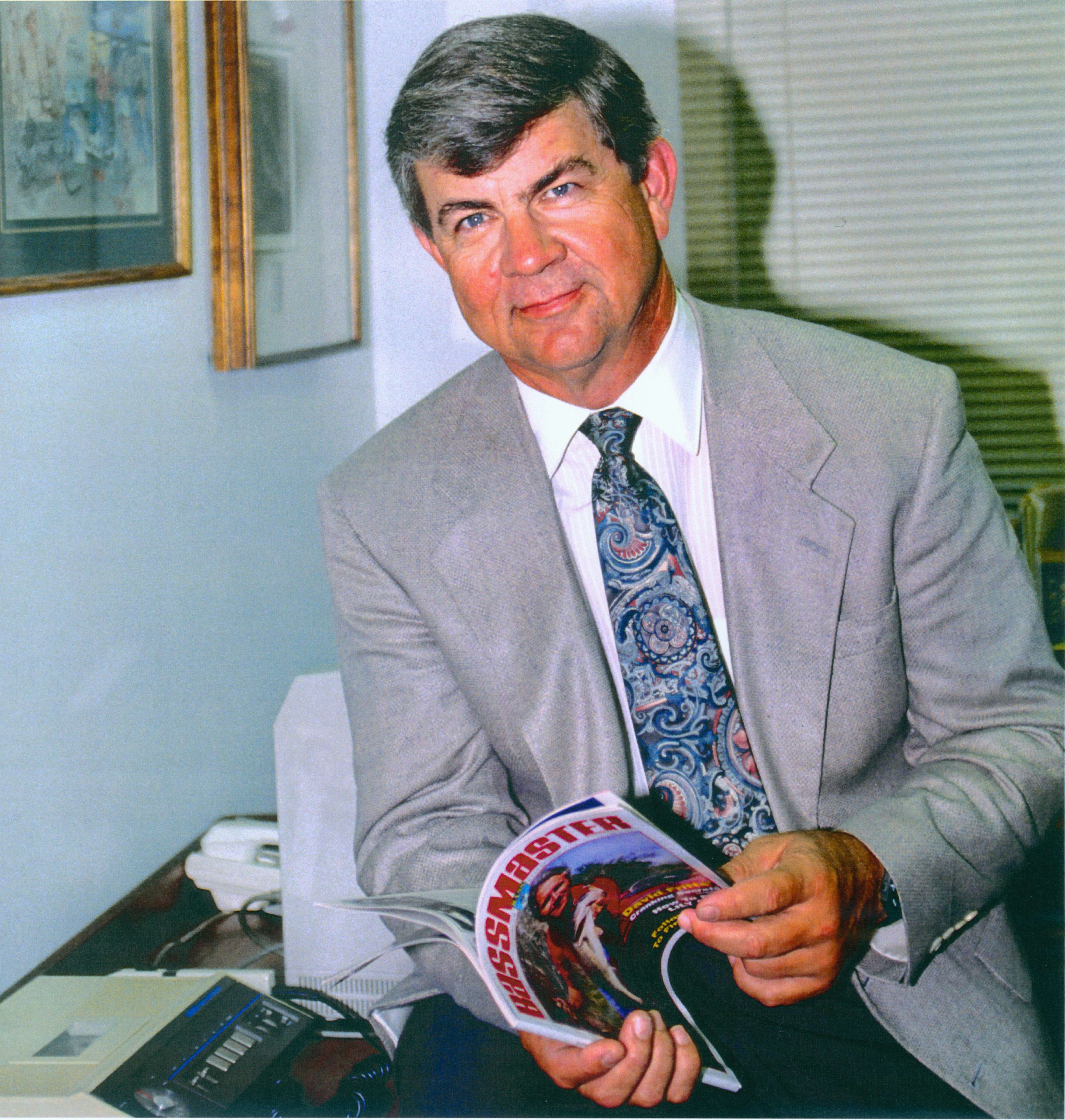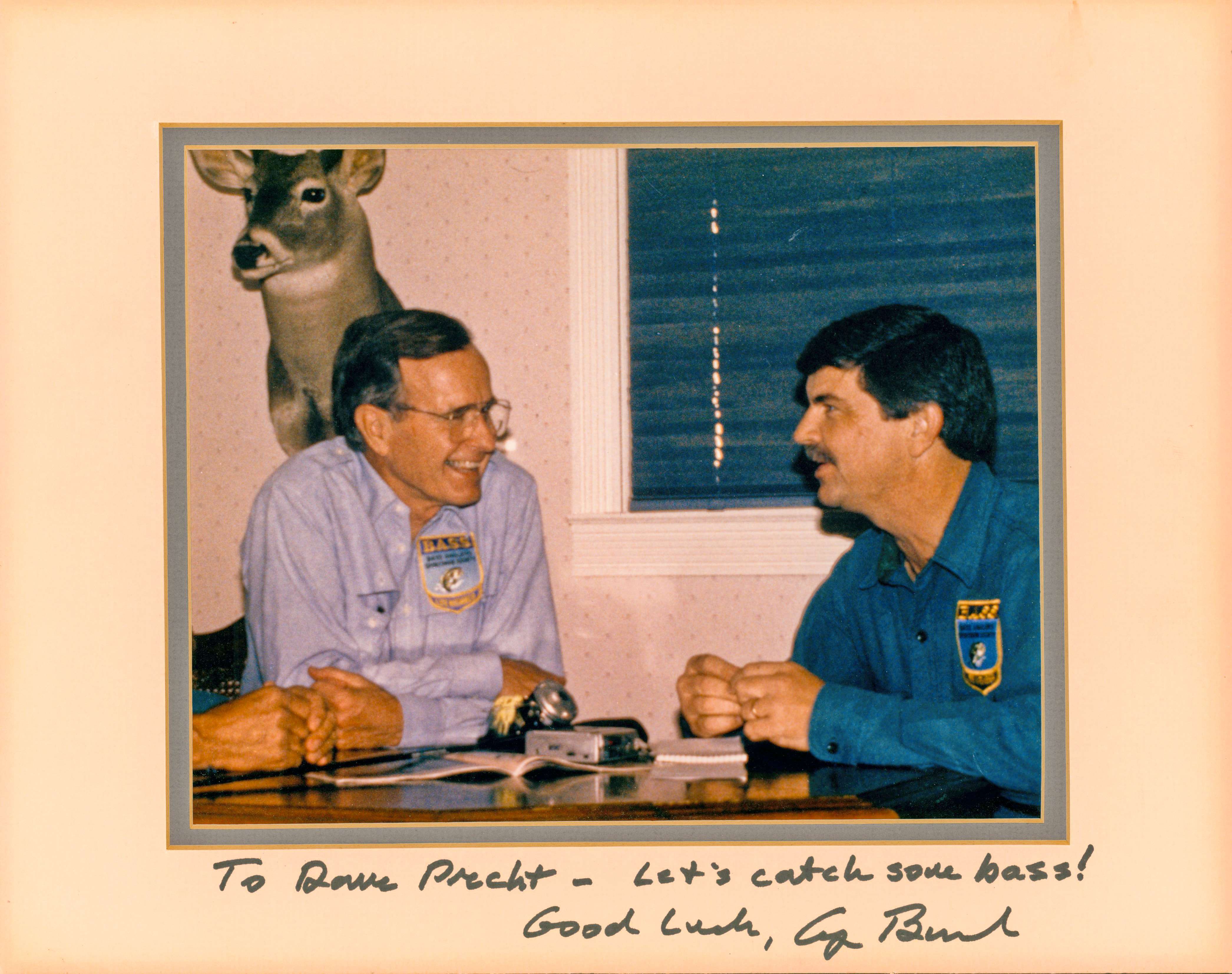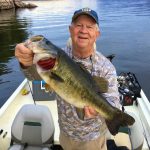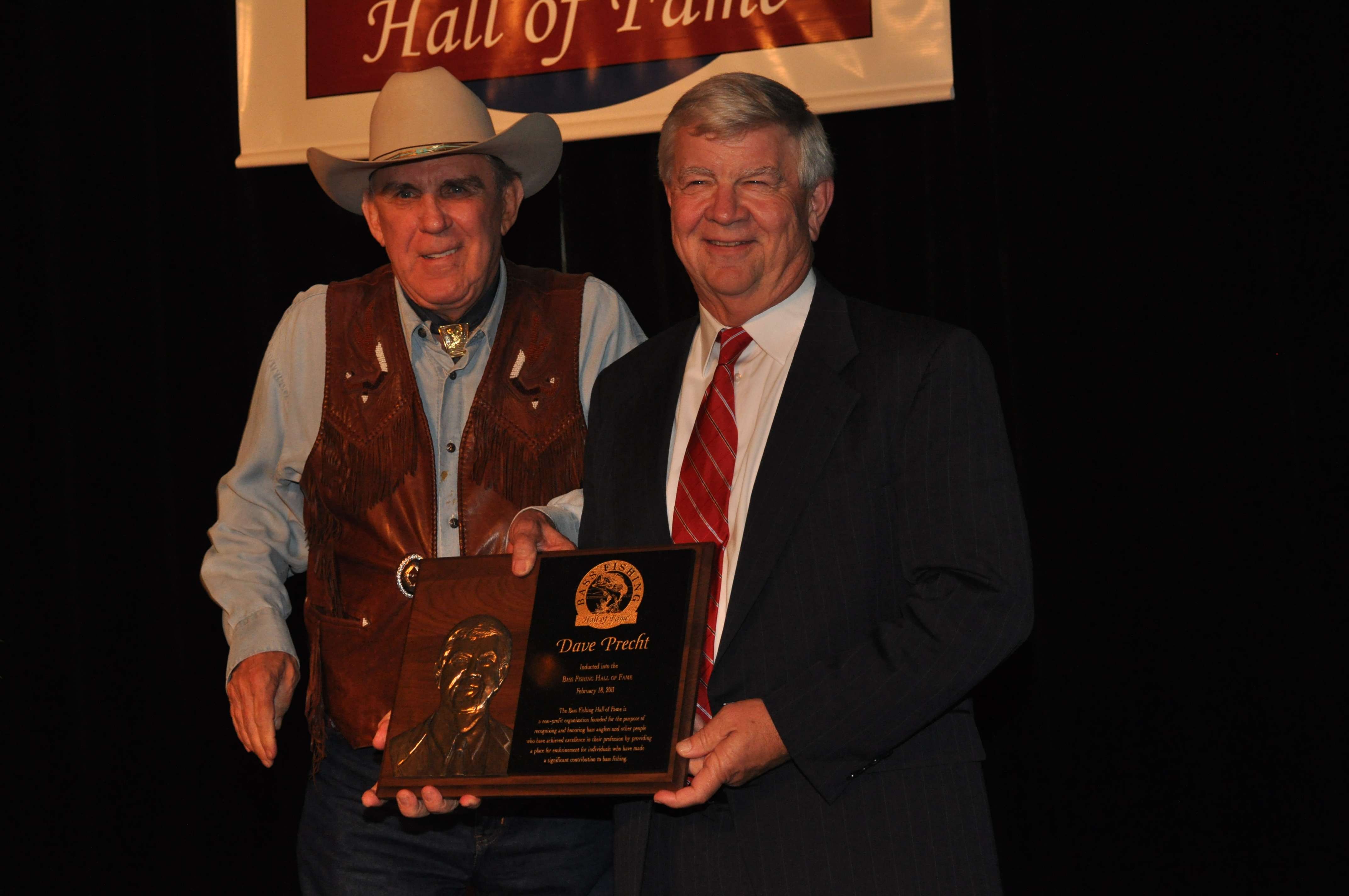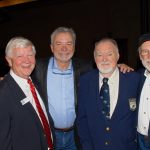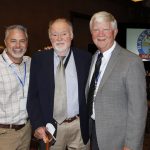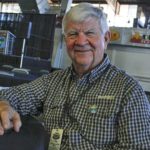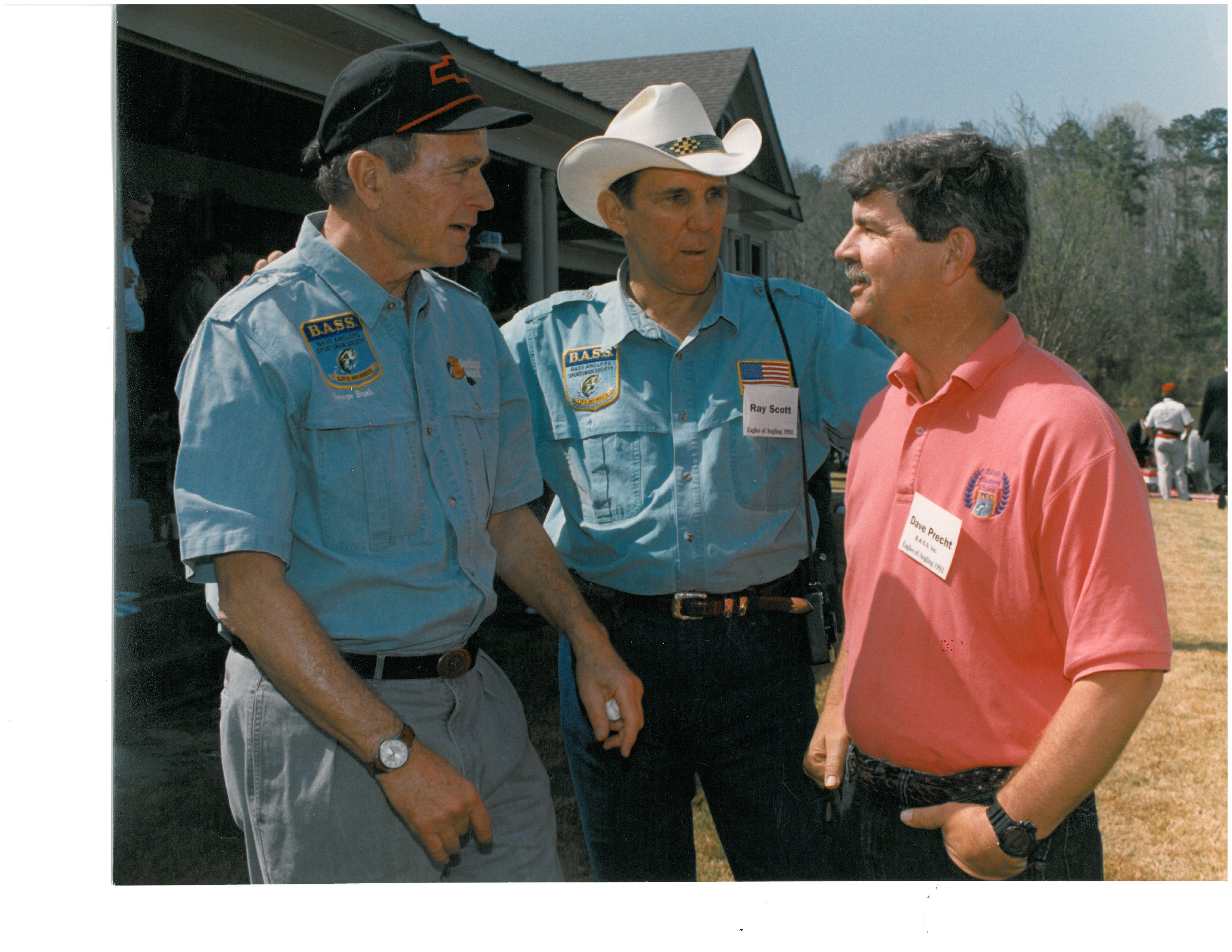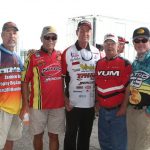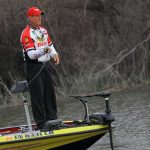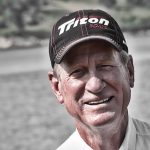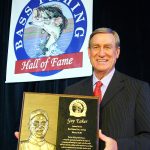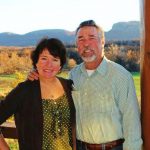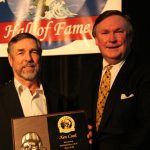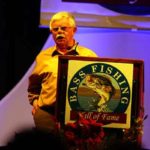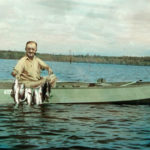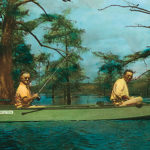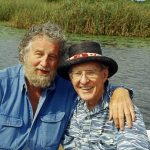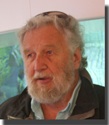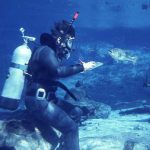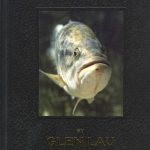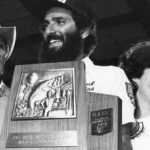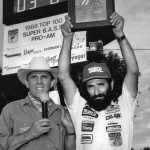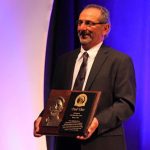Dave Precht
Dave Precht (1949- ) — When he retired from B.A.S.S. in July 2019, Dave Precht ended a lengthy career in his “dream job” — educating and entertaining bass anglers through the pages of Bassmaster Magazine. His 40 1/2 years with the company made him the longest-tenured employee of B.A.S.S., and that included 19 years as editor of Bassmaster and another 16 as editor in chief.
When he succeeded Bob Cobb at the helm of the magazine, it fulfilled the goal Precht had set in grade school, when he decided he wanted to be the editor of an outdoor magazine. And it happened almost by accident.
As the outdoor writer for the Houston Post newspaper, Precht was invited to cover the 1978 Bassmaster Classic at Ross Barnett Reservoir in Mississippi. After he missed the media bus back to the hotel following the final weigh-in, he hitched a ride with Ray Scott, founder of the then-young fishing organization. The two hit it off immediately, and Scott soon recruited Precht to join the B.A.S.S. operation in Montgomery, Alabama, and prepare to take over Bassmaster.
After eight years in the newspaper business, Precht and his wife, Linda, moved to Alabama, and he began work as staff writer for Bassmaster and publicist for the B.A.S.S. Tournament Trail. When he wasn’t attending bass tournaments, Precht worked as speech writer and public relations assistant for Scott, who had just been named the state chairman in Alabama for George H.W. Bush’s campaign for the presidency.
In 1980, Precht took over another B.A.S.S.-owned magazine, Southern Outdoors, a hunting and fishing magazine that covered the southeastern states.
He was moved to editor of Bassmaster in 1984, when Bob Cobb became producer/director of the new television show on The Nashville Network, “The Bassmasters.” He maintained the editorial format Cobb had established by using professional anglers as the main sources of how-to information. He also set about assembling a lineup of contributors who not only were gifted communicators but also passionate and skilled anglers. Bassmaster senior writers including Don Wirth, Steve Price, Tim Tucker, Louie Stout and Wade Bourne — all members of the Bass Fishing Hall of Fame — helped attract new B.A.S.S. members by the thousands.
He introduced those readers to mainstay features that are still read today, including “Day on the Lake,” “Lunker Club,” “Bassmaster Basics,” “Ask the Experts” and others. With the continued success of the magazine, frequency increased from eight issues per year to 11, and Bassmaster joined Field & Stream and Outdoor Life as the most popular outdoor magazines in the nation.
During his nearly 20 years as editor, Bassmaster grew to more than 600,000 members (subscribers), and the magazine was selected as one of the Top 10 “Hot Properties” among all magazines by Ad Age. As editor, Precht dedicated the magazine to promoting competitive fishing, boating safety, conservation, sportfishing ethics and bass fishing as family recreation.
Shortly after B.A.S.S. was acquired by ESPN, Precht was promoted to senior director of several departments, including editorial and conservation. After almost two decades of editing Bassmaster, he turned that job over to James Hall, who became the third editor of the magazine in its 50-plus-year history, in 2003.
As a member of the senior staff under ESPN and its successors — Don Logan, Jerry McKinnis and Jim Copeland, who bought B.A.S.S. in 2010 — he also edited B.A.S.S. Times Magazine from 2008 through 2015. He served as vice president, Editorial and Communications from 2011 until his retirement.
Precht also served on the Communications Committee of the American Sportfishing Association and the Board of Directors of the Bass Fishing Hall of Fame. Passionate about promoting youth fishing, Precht created the prestigious Bassmaster High School All-American Fishing Team program, which honors high school anglers who excel in fishing competitions, academics, leadership and community service. A 2011 inductee into the Bass Fishing Hall of Fame, Precht was named to the Legends of the Outdoors Hall of Fame in 2017 and the Fresh Water Fishing Hall of Fame in 2018.
- with Dave Precht, Steve Bowman and Bob Cobb
- There have only been three editors of Bassmaster Magazine. Precht, Bob Cobb and James Hall.
Dave Precht
Guy Eaker, Sr. — Guy Eaker, Sr. is still competitive in the B.A.S.S. OPEN and the Carolina’s Bass Challenge tournaments at the age of 77, proving that fishing is a sport for all ages. He began fishing at the age of four, when his father, Earl Eaker, took him on his first fishing trip. Guy went on tour as a Professional Angler in 1975, making him one of the senior members of the tournament circuit. In 1975 he won the N.C. ABF State tournament, granting him the right to fish in his first National tournament, the ABF Top 400 World Championship in Kissimmee, FL. Guy placed 19th in the championship, caught “big fish”, and won a new boat. Following these winnings, he won the ABF Lake Seminole tournament and won 1977 ABF “Angler of the Year”. In 1980 he won the Hungry Fisherman circuit “Angler of the Year” and in 1994 he won his first National BassMasters’ tournament on Lake Sam Rayburn in Texas.
Over the years, Guy has fished in 341 National tournaments, has placed 177 times in the money, and given over 700 seminars. He qualified for 10 BassMasters’ Classics, 4 ABF Grand Prix Classics, the 2009 PAA Classic, and the 2010 PAA All-star Qualifier. He has fished in over 20 celebrity tournaments, with professional golf and racing icons, Dale Earnhardt Sr., Harry Gant, Michael Waltrip, Payne Stewart, Fuzzy Zoeller, Hal Sutton, and Brad Bryant. He has fished with two former presidents, George Bush and George W Bush. Fishing with both Bush presidents raised over a million dollars to assist in building a church in Pintlala, AL , the home of founder and previous owner of B.A.S.S., Ray Scott. Guy has supported many charities throughout his fishing career. Such as, Special Olympics for Children, United Way of Carolinas, Muscular Dystrophy Association and St. Jude Children’s Research Hospital.
Guy has also enjoyed success as a lure designer, has produced many videos on how to fish for bass, and is coauthor, with Steve Price, of the book, Catching Bass Like A Pro. Guy has not only fished in many US fishing circuits, he has fished in other countries. He shot commercials for Abu Garcia in Sweden, fished in Canada and Mexico, and in 2002 he fished in and won Brazil’s first International Peacock tournament on the Amazon River. In 1978, he represented the USA in one of the first International tournaments in Cuba, where Castro welcomed them.
Eaker is a board member and a long-time supporter of the Bass Fishing Hall of Fame. He was inducted into the Cherryville (N.C.) Sports Hall of Fame in 2001, the Bass Fishermen Hall of Fame (BFHOF) 2011 and the Gaston Country Sports Hall of Fame in 2012. In recognition of his professional career and his civic contributions, his hometown of Cherryville, NC declared July 4, 1992 as “Guy Eaker Day.”
- With fellow Hall of Famers, Ken Cook, Tommy Martin, Bobby Murray and Rick Clunn
Guy Eaker
Ken Cook (1947—2016) In 1983, Ken Cook walked to a payphone across from the weigh-in stage in Palatka, Florida to phone his wife Tammy and tell her he’d just won $100,000 in the Super B.A.S.S. event, and would soon be quitting his job as a fisheries biologist.
It was a phone call that ultimately lead him to the Bass Fishing Hall of Fame.
Cook was an impressive blend of both academic intelligence and natural intuition. He was raised in rural Wilburton, Oklahoma and graduated with a B.S. degree in zoology from Oklahoma State University before beginning his 13-year career as fisheries biologist for the Oklahoma Department of Wildlife and Conservation.
He was proud of his work in fisheries, but an internal fire to combine his love of the bass fishing with competing in tournaments eventually lead to a pair of victories in much respected B.A.S.S. regional events prior to winning the $100,000 1983 Super B.A.S.S. events on the St. Johns River.
Cook’s phone call home from the St. Johns to declare a major career change became powerful igniter to what became an iconic 26 career as a pro angler, highlighted by his victory in the 1991 Bassmaster Classic on the Chesapeake Bay using the beloved Hart spinnerbait he helped design.
Prior to his Classic victory, Ken also won the 1983 Missouri Invitational on Truman Reservoir, and the 1987 New York Invitational on the St. Lawrence River.
He was truly one of the world’s greatest professional bass anglers during the decades of the 1980s and 90s, qualifying for 14 Bassmaster Classics during that era.
The 1991 Bassmaster Classic victory enabled him to buy hundreds of acres of land near Meers, OK, where they built a home in 1995 on what he and Tammy named Tarbone Ranch. The family passionately manages herds of whitetail deer, elk, and trophy bison for trophy hunting.
In 2005, Cook was selected by B.A.S.S. as one of the Top 35 angler of all time, and two years after he retired from professional bass fishing in 2009, he was inducted into the 2011 class of the Bass Fishing Hall of Fame.
He thoroughly enjoyed retirement by sharing quality time in the outdoors, not only on Tarbone Ranch with sons Jason, Hunter and Tanner and their families — but also with Tammy on extended excursions to places such as Door County, Wisconsin to chase smallmouth bass for weeks at a time, and Africa where he harvested perhaps his proudest archery trophy of all time – a leopard.
Ken was chopping wood and hunting coyotes on Tarbone Ranch hours prior to his unexpected death in January 2016 of an apparent heart attack at age 68.
Perhaps a fitting final chapter to a man whose life was guided by his own compass en route to achieving what many may have labeled nearly impossible dreams of becoming a legendary pro bass angler while working as a fisheries biologist.
- Ken with his wife Tammy
- Ken at his induction into the HOF
Ken Cook
Holmes Thurmond — Through the 1940s, fishing boats for freshwater were either flatbottom barges that were slow and hard to guide with a sculling paddle, or high-prow Vee-hulls that were blown off course by the slightest breeze. Give Holmes A. Thurmond credit for a breakthrough in hull design. His creation, which he introduced to the boat-buying public in 1948, was stable, quick and smooth riding, and with its inward-sloping sides, it wasn’t pushed about by the wind.
Thurmond’s little wood boat developed quite a following. Like a sharp-nosed bug propelled by a relatively small outboard motor, the boat zipped across lakes, earning the nickname, “Skeeter” (short for mosquito) because of its long, pointed bow. Skeeter became the name of what many believe to be the world’s first bass boat.
An Evinrude Outboards dealer in Shreveport, Louisiana, in the 1940s, Thurmond loved bass fishing. He found the flatbottom johnboats everyone used in the bayous and cypress-studded lakes around his home to be slow and difficult to maneuver. He wanted a boat that would get on plane with his most popular motor at the time, a 5.4-horsepower Evinrude Zephyr. With a low-profile hull and shallow draft, it could be propelled easily with a sculling paddle.
The 1948 model was just longer than 13 feet and was made of 3/4-inch molded marine plywood for the hull and 1-inch plywood at the transom. It weighed 200 pounds and ran nicely with the 5.4 hp outboard, and it could handle larger motors, such as the 14-hp Evinrude that came out later. All were painted “Skeeter green.” At $154 apiece, the boats were in high demand, and Thurmond hired subcontractors in the Shreveport area to help keep up with orders. Whether or not he knew it at the time, Thurmond was laying the groundwork for the bass boat boom, one of the most momentous developments in the history of the marine industry.
He eventually sold the rights to build fiberglass replicas of Ben Cook, co-owner of STEMCO in Longview, Texas. As the brand grew, it was moved to Kilgore, Texas, where the company — now owned by Yamaha Marine — is headquartered today. After switching from plywood to fiberglass, Skeeter recognized the developing market for tournament-worthy bass boats and introduced popular models like the Skeeter Hawk. With numerous innovations in boat design and function, including the Vee-hull pad design, Skeeter became one of the most popular boat brands in the country and today features a line-up that includes not only bass boats, but bay boats, walleye boats, and fish-and-ski models.
Because of his impact on the bass boat industry, Thurmond, who was born in 1894 and passed away in 1970, was inducted into the Bass Fishing Hall of Fame posthumously in 2012.
- Butch Thurmond gave the speech for his deceased grandfather, Holmes Thurmond, who is credited with creating the first version of the modern bass boat, which was nicknamed Skeeter
Holmes Thurmond
Glen Lau (1933 – 2020) — As a fishing guide for bass, trout and walleye on Lake Erie, Glen Lau was legendary. He offered money-back guarantees to his guide clients, and he never had to pay off. When the King of Ohio Fishing Tournament was held in 1958 to honor the angler who brought in the most total weight of game fish in a season, Lau won, hands-down, with nearly 3,000 pounds.
The prize enabled Lau to travel to central Florida, where he fell in love with the region’s crystal-clear, spring-fed rivers, as well as the giant bass of the Ocklawaha River and other nearby fisheries. He eventually moved to the region, living for many years near Ocala, Florida, the home of Bass Fishing Hall of Fame journalist Homer Circle.
As skilled and knowledgeable as he was in finding and catching bass, Lau was even more gifted as a cinematographer. He taught himself to film underwater sequences so he could document the life cycle of the black bass. After more than two years of filming above and below the surface, Lau created the full-length movie, Bigmouth, with fishing scenes featuring Homer Circle and narration provided by Rod Serling of “Twilight Zone” fame.
Arguably the most important documentary ever made about bass and bass fishing, Bigmouth drew critical acclaim and was a theatrical success when it was released in 1973. The movie played in art houses and auditoriums, as well as theaters, often drawing audiences more than double the available seating capacity. A sequel, Bigmouth Forever, also was hugely popular, winning the 1996 North American Film & Video Award and numerous other national honors.
The success of Bigmouth made Lau much in demand for filming commercials, short films and documentaries for major manufacturers in the fishing industry, and his still photos of leaping bass graced the pages and covers of Bassmaster and many other outdoor magazines.
As a producer and director, he created more than 300 commercials and 200 television programs, including several segments of The American Sportsman, the Wild, Wild World of Animals, Quest for Adventure, The Fisherman, Sports Afield and The Outdoorsman.
His book, Bass Forever, chronicles many of Lau’s lifelong achievements, both as an angler and filmmaker, and it reveals some of his most productive lures and tactics for catching bass.
Lau hosted or appeared on more than 300 television programs and is a member of the Screen Actors Guild, the American Society of Media Photographers and the Amirian Fisheries Society. He was one of the founders of the “Hooked on Fishing, Not on Drugs” campaign, and he has been inducted into the Freshwater Fishing Hall of Fame.
Glen passed away on June 5, 2021
Glen Lau
Paul Elias — During his 42-year career as a B.A.S.S. pro, Paul Elias has won six tournaments, including the 1982 Bassmaster Classic on the Alabama River in Montgomery, Ala. In that tournament, he introduced his “Kneel ‘N Reel” technique for deep cranking. He used the tactic years later to establish the all-time winning weight record for a 5-bass-limit tournament with 132 pounds, 8 ounces during an Elite Series event in April 2008 at Lake Falcon, Texas.
In between those tournaments, he became a recognized expert and innovator in the technique of deep cranking. He qualified for 15 Bassmaster Classic, finishing in the Top 10 eight of those events. He has won six B.A.S.S. events and posted 41 Top Ten finishes. A true Pro’s Pro, Elias has been an ambassador for the sport and especially for the profession of competitive bass fishing.
